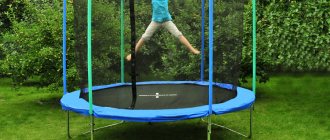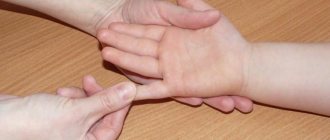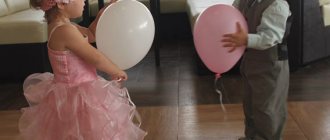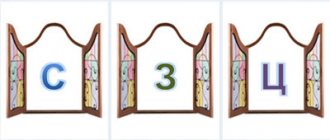Typical speech disorders in children 5-6 years old
Most older preschoolers have difficulties with:
- mastering sonorous and hissing sounds;
- sound analysis of words;
- development of narrative speech;
- writing a story and descriptions.
Of course, such problems can be minor, only slightly different from the age norm, or serious, up to and including general speech underdevelopment (GSD). It is necessary to contact a speech therapist in any case, but the supportive work of parents at home is also very important.
It is worth noting that regular speech therapy exercises and classes for children 5-6 years old are useful for every child at home, because they help to master literacy faster.
Rules for speech therapy classes at home
The success of home lessons depends not only on the availability of the necessary aids and a work plan agreed upon with the speech therapist. The organization of classes itself is very important. Here are a few simple rules that will help you achieve excellent results:
- All speech therapy exercises for children should be carried out regularly, but a little at a time. You shouldn’t try to do articulation gymnastics, play speech games, or fill out a workbook right away. It is better to devote a few minutes to each type of exercise, rather than having a whole “speech therapy day.”
- Do not force them to complete tasks under pressure; educational activities for children should resemble a game. Come up with a simple plot (for example, a journey into the universe of sounds), prepare small prizes (stickers, paper stars), and arrange physical exercises.
- Praise and support the little student if he makes even the slightest progress. Focus on achievements, even small ones, gradually progress will become more and more obvious.
- Find good workbooks for home practice. They should not only be professional in content, but also bright, colorful, and exciting. It is ideal if the tasks have interactive elements (the opportunity to add something, draw something). Such material makes it possible to interest a preschooler and clearly shows him the “path traveled” and success.
- Don't expect instant results, be patient and gentle perseverance. The process of setting, consolidating, and differentiating sounds is complex; it takes months even for experienced speech therapists. Follow the plan and the results will gradually appear.
Speech therapy exercises for practicing at home
All speech therapy exercises can be divided into three large blocks, each of which needs to be given attention and carried out regularly:
Development of phonemic hearing
The ability to distinguish sounds by ear seems natural, but if you ask your preschooler to spell a word, you will see gaps.
For children 5-6 years old, there are a large number of special games and exercises that help develop phonemic hearing. These include:
- selection of words starting or ending with a given sound;
- counting sounds in a word, determining the syllable structure;
- drawing up a sound diagram of a word;
- inventing rhymes and short poems;
- pronouncing speeches and tongue twisters.
Thoughtful speech therapy classes for children 5-6 years old make it possible to make all the sounds of their native language obedient and easy.
Finger gymnastics
Fine motor skills of the hands help speech activity, so older preschoolers must do it without fail.
Of course, for children 5-6 years old, the exercises should be complex, with a script, in verse. It is useful to select sets of exercises for both hands at the same time, synchronous. Don't forget to use "helpers":
- small massagers (rubber balls, rollers, cones);
- scissors for cutting;
- plasticine;
- origami paper.
Also remember that all types of needlework, construction, and any creativity are great ways to improve fine motor skills outside of individual lessons.
Articulation gymnastics
Special language exercises must be performed every day if there are any problems with pronunciation. For home exercises, it is best to choose a set of exercises with a poetic description and pictures.
Do a tongue warm-up every day, always in front of a mirror (this allows the baby to observe the process himself, assessing its success). If you have problems with one or two sounds, then articulatory gymnastics should be selected for them. These can be found in thematic workbooks on speech therapy.
Characteristics of the development of a 3-4 year old child
At 3 years old, the child is open to learning his native language, he happily repeats everything after an adult and is actively engaged in word formation. By the age of 4, the passive vocabulary reaches 2,500 words, most of which are verbs and nouns.
Three-year-old children have an extensive passive vocabulary
The child’s speech also contains:
- simple adjectives (beautiful, small, big);
- possessive pronouns (my);
- generalization words (animals, vegetables).
A preschooler does not yet have much life experience and produces new words in his own way. This gives rise to curious word forms, for example: “Mom is studying, but I am a lazybones.” A three-year-old child is able to maintain a simple dialogue.
The most difficult sounds to pronounce are “R” and “L”, as well as the whistling “Sh”, “S”, “F”. Often, even after reaching four years of age, the child is not able to pronounce them.
Important! If at 3-4 years old a child does not pronounce all sounds clearly, this is not a reason to run to a speech therapist. The sounds “R”, “L”, “Sh”, “S”, “F” are usually introduced at a later age. However, if by the age of 3 the baby does not speak at all, and there were serious illnesses or injuries during pregnancy/birth/in the first year, consultation with specialists is required. Based on the results of the examinations, a psychologist, speech therapist and neurologist will tell you what speech therapy exercises for children 3-4 years old should be performed.
Speech therapy tasks
Starting with the letter R
One of the most difficult sounds to master is R. Many preschoolers learn to roar loudly by the very end of kindergarten. If the production of the sound P is already behind you, then special exercises will help speed up its automation:
1. “Like a little motor”
We ask the child to pronounce the sound R in the word for a long time, drawlingly (like a motor growls).
2. “Where is R hiding?” (in pictures and words)
Offer to choose pictures with images of objects with a given sound or clap your hands if he hears such a word.
3. “How can you growl?”
Show your child pictures of objects that have the sound r in their names. Offer to read and color the picture.
4. “Sounding tracks”
Together with your child, come up with several chants made up of several syllables:
Ra-ra-ra - they ran away from the yard.
Ro-ro-ro - and they found a bucket.
Ru-ru-ru - we came up with a game.
5. “Substitute a syllable”
The adult offers the child words that end or begin with a syllable with P (ra, ro, ry), the child must choose the correct option and pronounce it correctly.
6. “Look and name”
An adult asks the child to read words with the letter r from the pictures. The word must be said as many times as there are stars next to each picture.
7. “Poems, tongue twisters, riddles”
Learn with your child several poems and riddles in which words with R appear.
The necessary tasks for speech development can be found in the Workbook for the sound R, compiled by Kostyuk A.V.
Download, print the tasks in pictures and study at home:
Speech therapy tasks for the letter P
Starting with the letter L
The hard sound L is also often difficult for children 5-6 years old. If the baby has already learned to pronounce it alone, in isolation, then it’s time to start working on automation in speech. The following exercises are suitable for this:
1. “Say it nicely”
Offer your child several images of words starting with L. Ask him to pronounce the words beautifully, emphasizing the desired sound with his voice.
2. “Toys for Larisa”
Ask your child to collect gifts for the Larisa doll. Tell her that she only likes things that begin with L. For this exercise, you need to select small objects or pictures in advance; all words should not begin only with L.
3. “One-many”
Invite your child to name words with L in the singular and plural. In the workbook for the sound L (author Kostyuk A.V.) there is a whole table with pictures for this exercise (lesson 20).
4. “Find the Sound”
Invite your child to draw up a diagram of the word and mark the place L on it. If it is still difficult for your child to independently determine the number of sounds, then first you can do several similar exercises from the workbook.
5. “Tongue twisters and nursery rhymes”
Use nursery rhymes, tongue twisters and poems with words that contain L.
Download and print tasks in pictures starting with the letter L:
Speech therapy tasks for the letter L
Articulation gymnastics is the best warm-up
You should invite your child to perform exercises aimed at training various muscle groups. Their description is presented in the table.
| Muscles | Task options |
| Lips | Smile so that your teeth are not visible, hold this position for 5 to 30 seconds. “Proboscis.” Fold your lips into a tube and fix the position. “Fence.” Smile in such a way that the upper and lower teeth are open, fix the position. |
| Language | "Spatula". Without protruding the tongue, the child places it on the lower lip and holds it in this position for 5 seconds. “Swing.” Move your tongue up and down, keeping your mouth open. “Let’s brush your teeth.” Use the tip of your tongue to “walk” along the back side of the upper teeth, then along the lower teeth. “Snake”. Stick out your tongue as much as possible and try to fold it into a tube. Repeat at least 5 times. |
| Hypoglossal ligament | "Horse". Click your tongue, imitating the clatter of hooves. Then complicate the exercise - click quickly or slowly, loudly or quietly. “Mushroom”. Press your tongue tightly against the roof of your mouth, hold it in this position for a few seconds, and relax. |
| Cheeks | "Balloons". Inflate both cheeks, then carefully slap them, releasing the air, to “pop” the ball. “Hamster.” Puff up both cheeks like a hamster. Then inflate one by one. “Hungry Hamster.” Pull your cheeks in, hold the position for a few seconds, and relax. |
You shouldn’t include all the exercises in your workout; you need to choose 2-3 of them and work them out properly, but at the same time carefully ensure that all muscle groups are involved during the week. The easiest way is to create a lesson plan for seven days, in which you describe on which day which exercise will be performed.
Each exercise from the complex, which suggests fixing a certain position, is first performed for 5 seconds, gradually the duration increases to 30. The parent can count out loud, this will help the child remember the numbers.










